In the last lesson, I explained why focusing on irrelevant details obscures the true driver of professional success: career capital.
But the connection between career capital and a great career isn’t always obvious. Why does the owner of a car dealership tend to make more than a nurse or a teacher? Why would most people struggle to make a living as an artist, but the guy who put a taxidermied shark in a tank is worth nearly half a billion dollars?
The basic answer of whether you’ll have a great career can be understood in terms of the simple economic concept of supply and demand.
Supply-and-Demand Thinking Applied to Your Working Life
Let’s start with demand.
Economists draw a downward-sloping curve to represent how much of something people want for a given price. The vertical axis is how much something costs, and the horizontal axis is how many people are willing to pay for the thing at each price. All else being equal, fewer people are willing (or able) to pay for something when the price is higher.
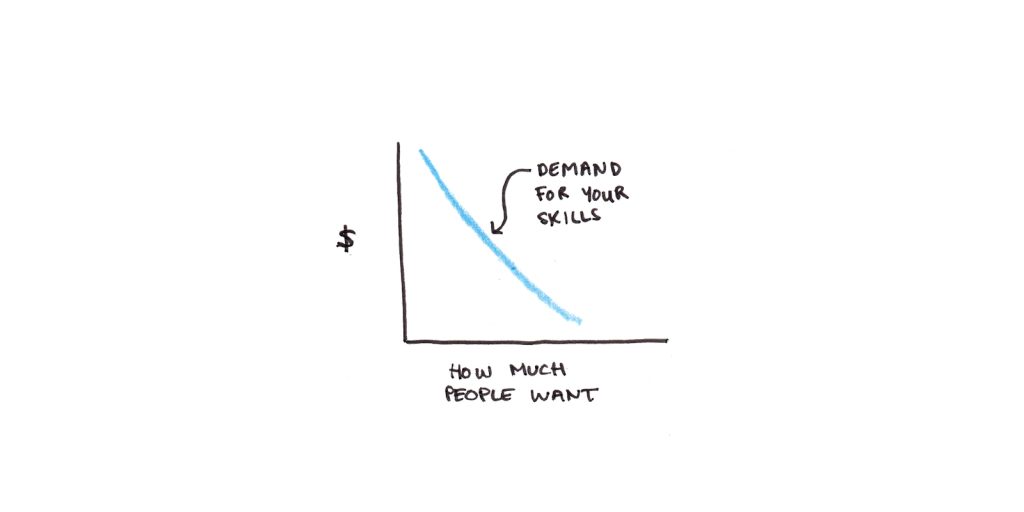
This curve can be a useful way to think about the value you offer to other people. In the job market, your career capital is valuable if people are willing to pay more for it. A higher-value set of career capital can be represented by the demand curve shifting to the right—more people want someone with your career capital for any particular price.
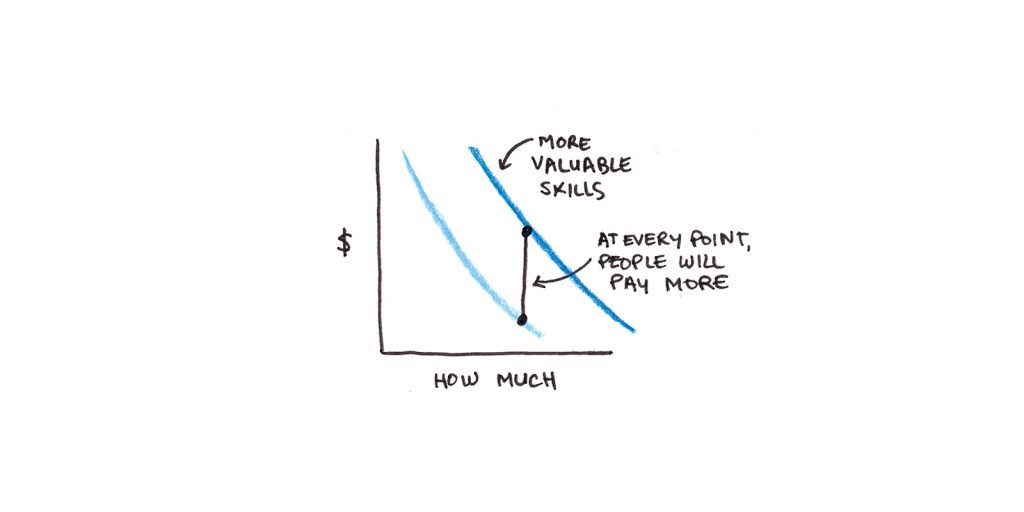
But demand isn’t the whole story. Water is essential for life, diamonds are not. But water is cheap because the supply of water is plentiful, and diamonds are expensive because the supply of diamonds is scarce.
Similarly, the supply curve for your career can be envisioned as the number of people who are willing to supply that career capital (the horizontal axis) for a particular wage (the vertical axis). As the price goes up, more people are willing to supply those skills, connections, reputation and other assets that people want.
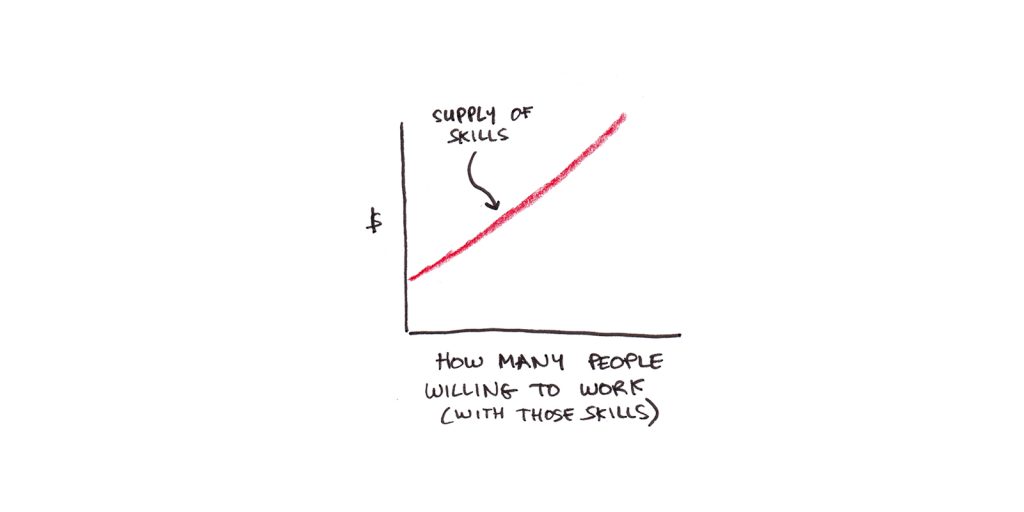
The supply curve can also be a measure of the scarcity of your particular career capital. Teachers and nurses earn less than many car dealership owners because there are more people who have the career assets to teach children or work as nurses than own big lots that can sell lots of cars.
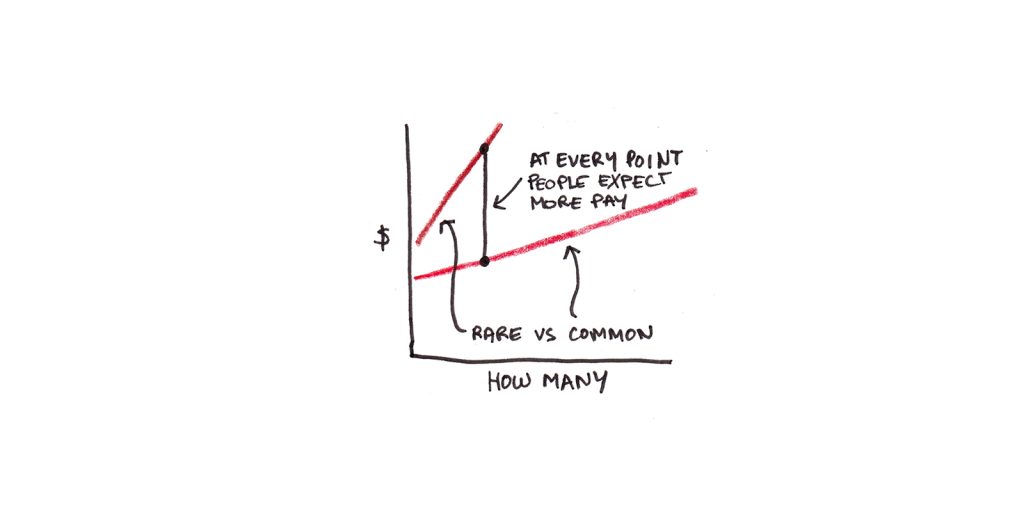
In a normally functioning market, the intersection between the demand and supply curves reflects the price and quantity sold of a given product. If demand is high and the supply is low, the price goes up.
In a career context, the return on your career capital depends on how many people value it, and how many others can supply it. This means to have a good career position, you need assets that are both rare and valuable.
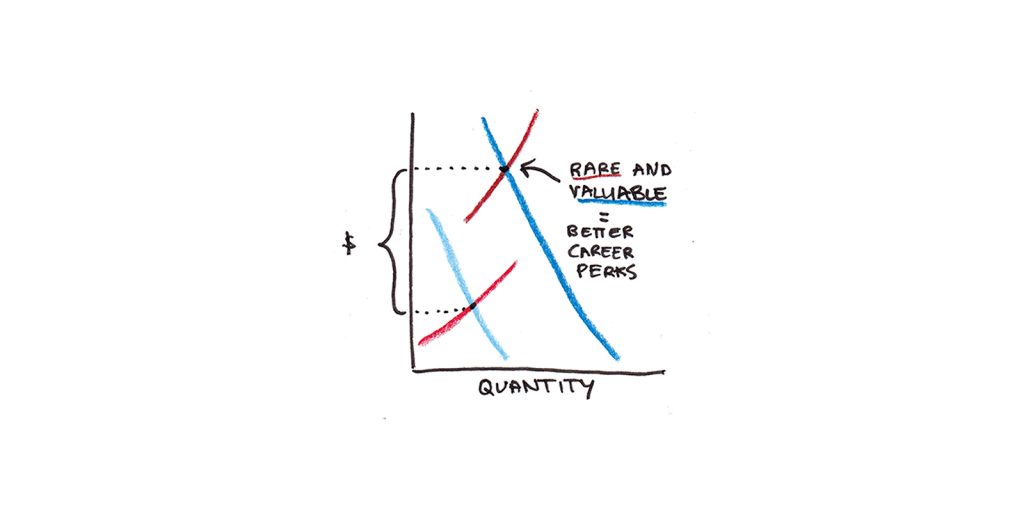
This thinking applies beyond just how much money you make. The person with rare and valuable career assets can, of course, parlay that into a higher income. But those same assets also serve as a negotiating point for anything else you might want: vacation time, interesting projects, professional autonomy, and more. A career you love and a career that pays well may not always be the same thing, but they’re both made possible with rare and valuable career capital.
As a mental model, I find supply-and-demand thinking incredibly useful, but it ignores a lot of important factors. Price caps, monopsonistic employers, professional guilds restricting membership, and more all complicate this basic model. However, it’s still a good baseline for thinking about the kind of career you can have.
Building Rare and Valuable Skills
As discussed in the previous lesson, skills are often the best starting point for building career capital. Reputation and connections tend to follow, not precede, excellent work, so the best place to start is building the skills that support doing excellent work.
This view reframes the question from how to build a valuable career to: How do you acquire rare and valuable skills?
This was the opening question Cal and I posed when we first started building our course, Top Performer. In the coming two lessons, I’ll share two major findings from working on this issue with thousands of students over nearly a decade. We’re setting up for a new session, starting next week. If you’re interested in building the career capital that actually drives a great career, I hope you’ll join us.


 I'm a Wall Street Journal bestselling author, podcast host, computer programmer and an avid reader. Since 2006, I've published weekly essays on this website to help people like you learn and think better. My work has been featured in The New York Times, BBC, TEDx, Pocket, Business Insider and more. I don't promise I have all the answers, just a place to start.
I'm a Wall Street Journal bestselling author, podcast host, computer programmer and an avid reader. Since 2006, I've published weekly essays on this website to help people like you learn and think better. My work has been featured in The New York Times, BBC, TEDx, Pocket, Business Insider and more. I don't promise I have all the answers, just a place to start.